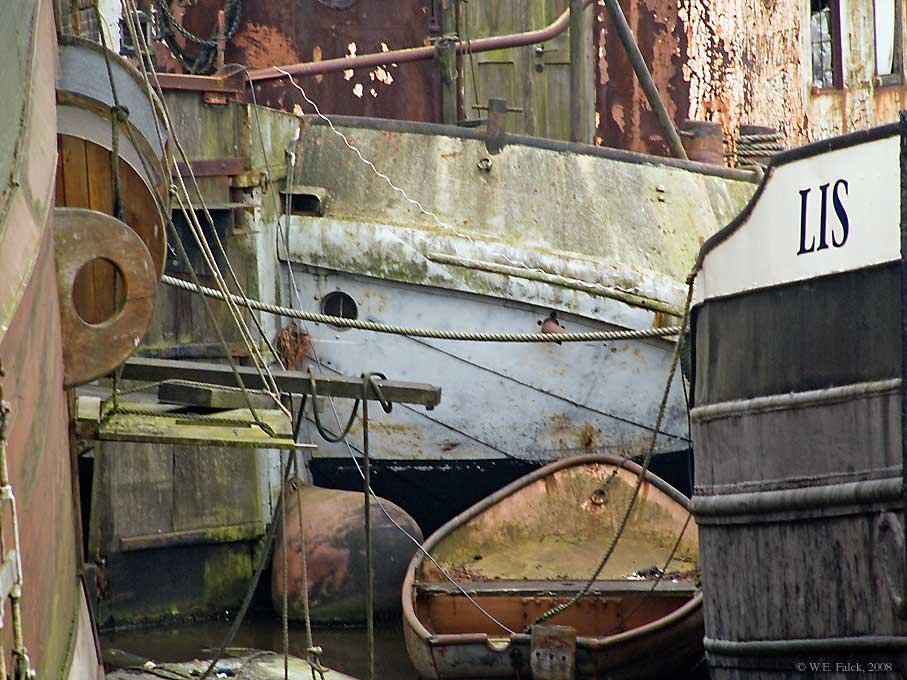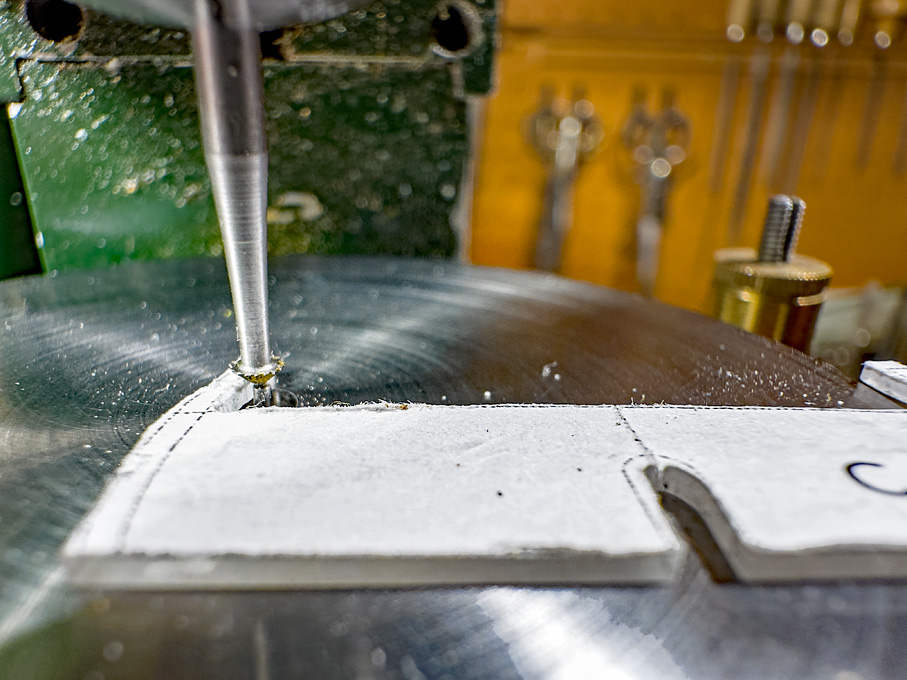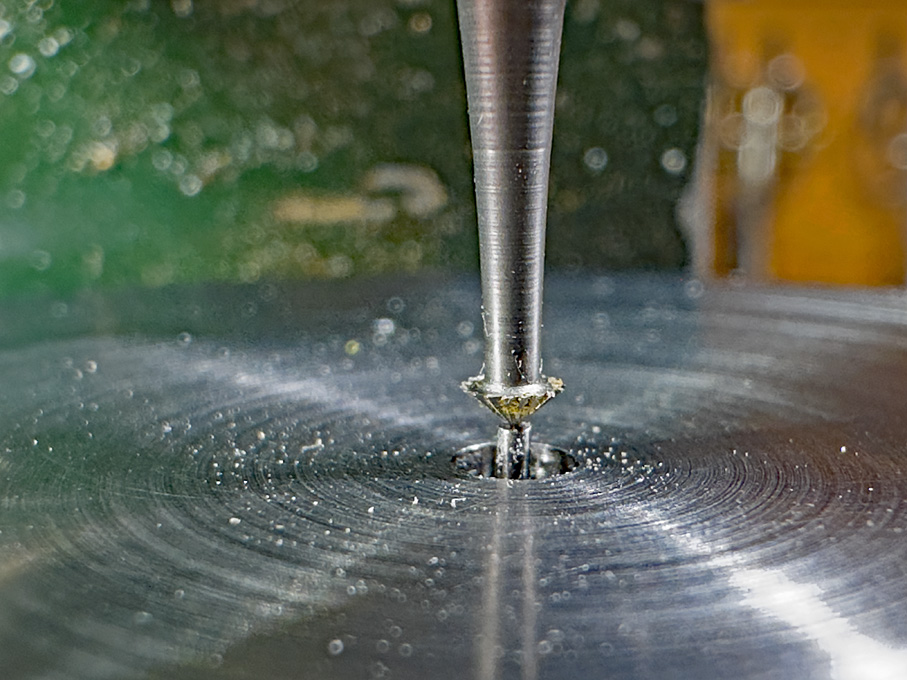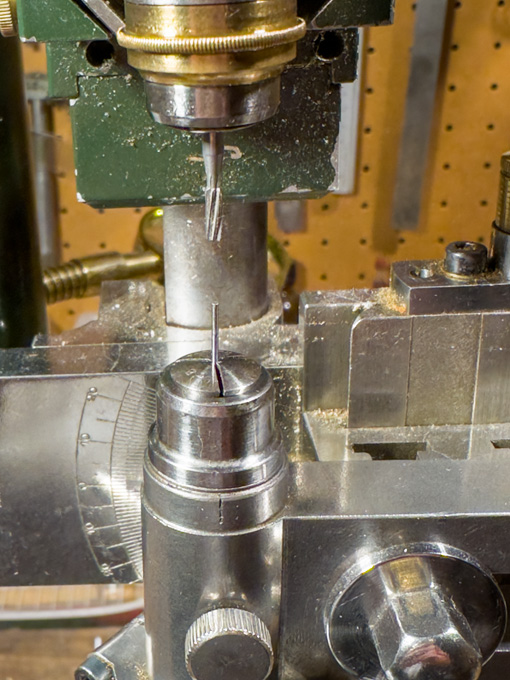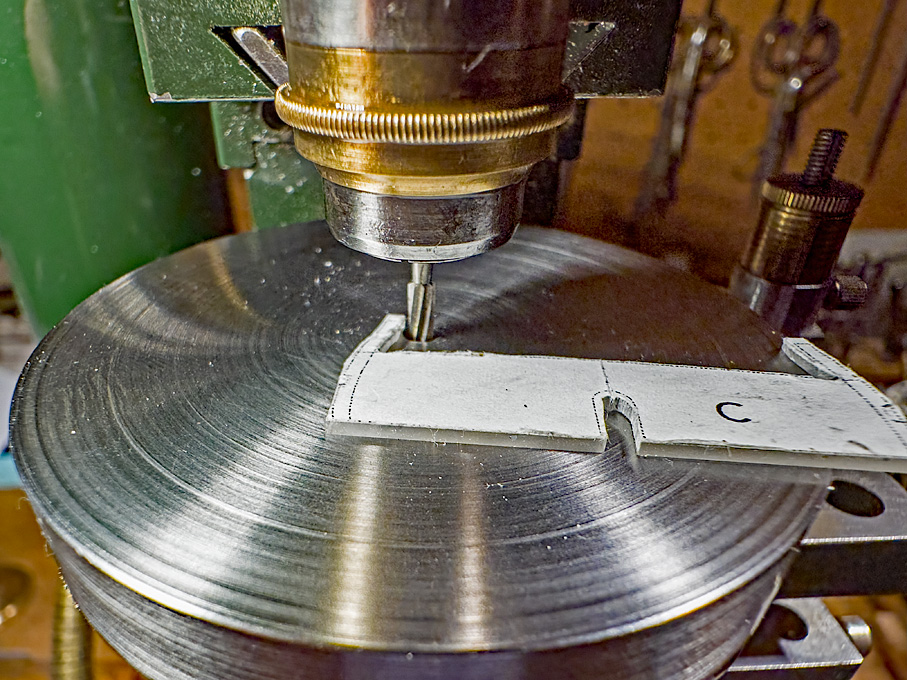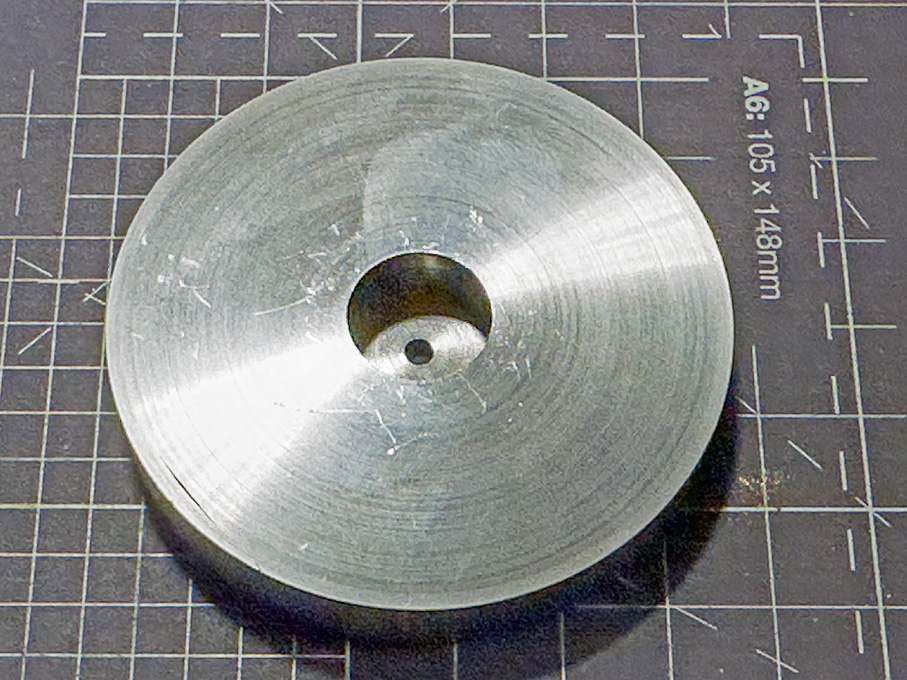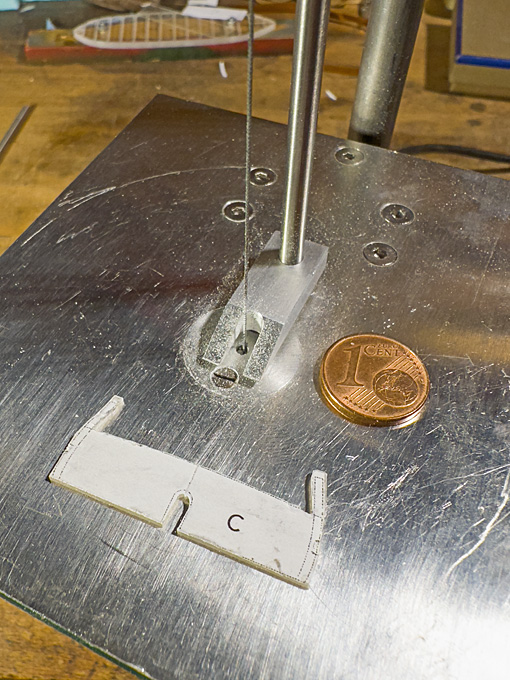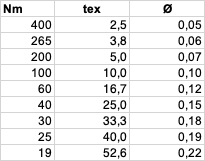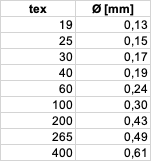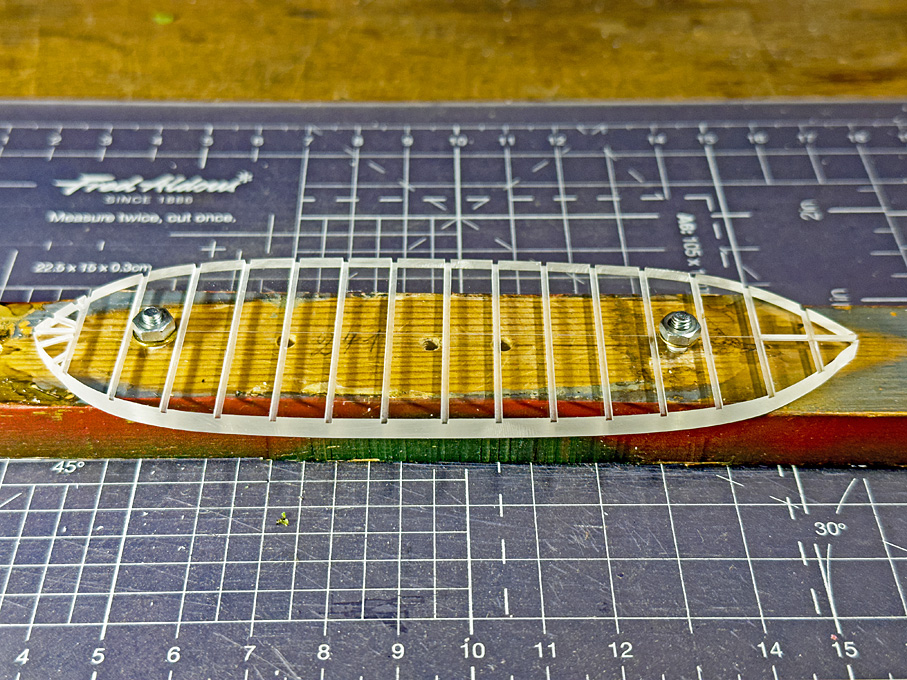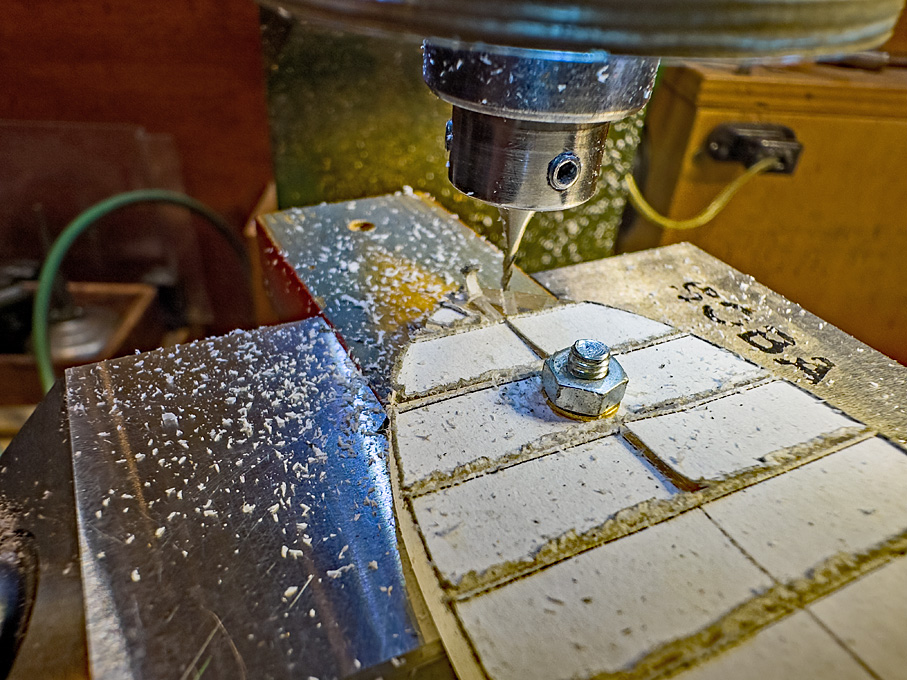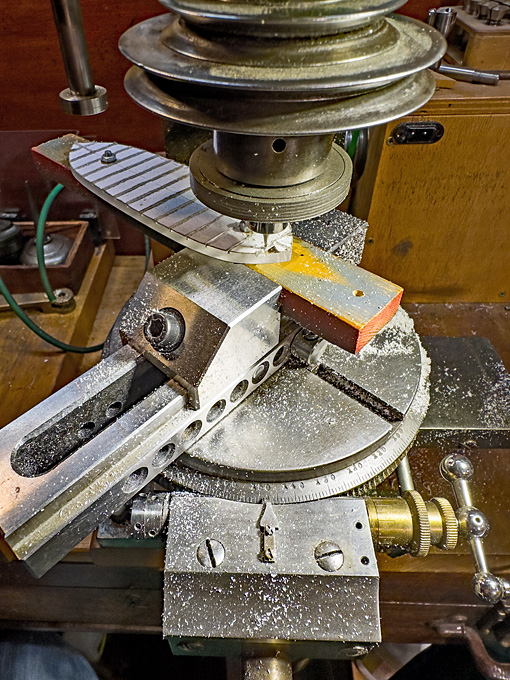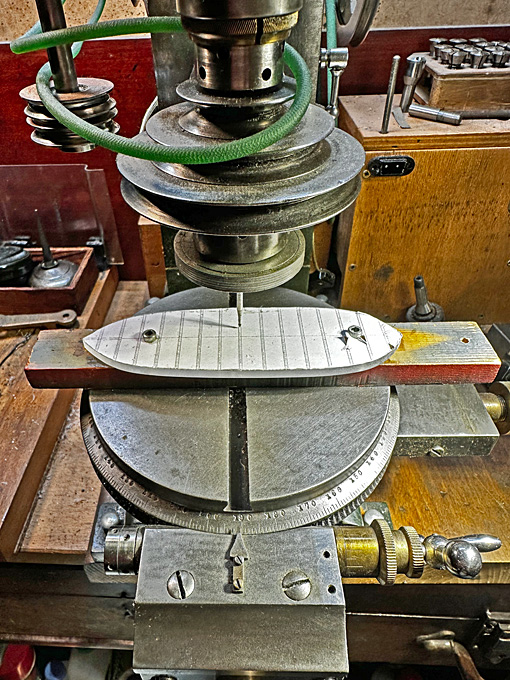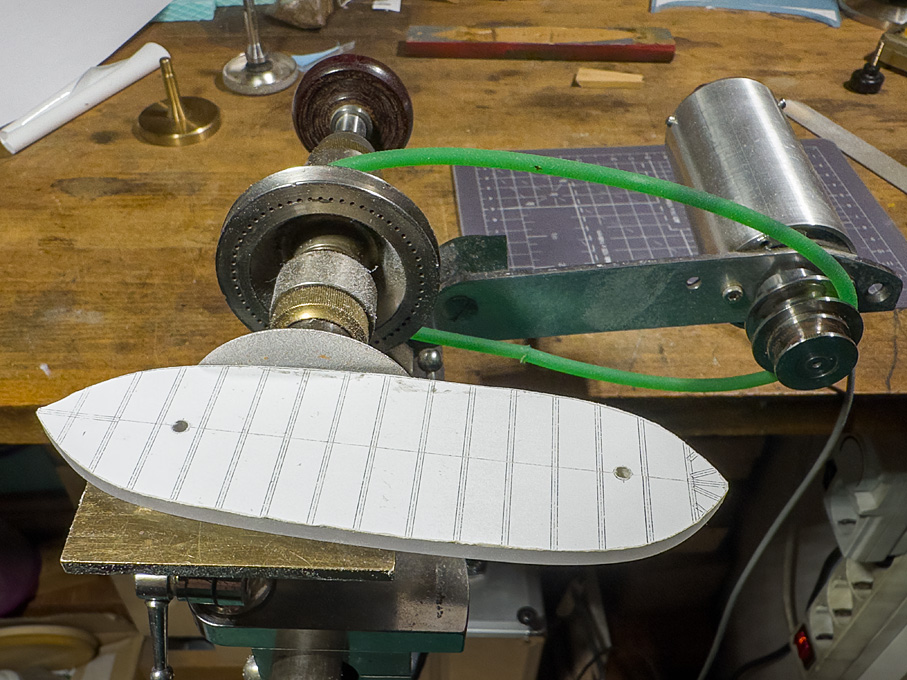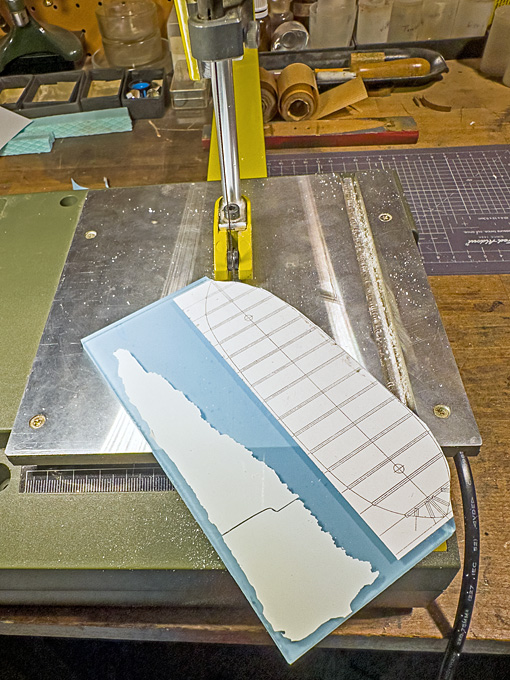-
Posts
6,547 -
Joined
-
Last visited
Content Type
Profiles
Forums
Gallery
Events
Everything posted by wefalck
-

Sultan Arab Dhow - Artesanía Latina - 1/60
wefalck replied to SiriusVoyager's topic in REVIEWS: Model kits
Seems to be based on one of the drawings in Pâris' Souvenirs de la Marine. It would be a good idea to cross reference with some literature, as the dhows do not use European fittings and materials. Since having been to Oman a couple of times (back in the late 1980s) and to Tanzania/Zanzibar (in 2012) I have a certain interest in ships and boats from that region. I have compiled a list of references. Those marked with an E in front are available as digital copies: E Agius, D.A., Cooper, J.P., Zazzaro, C. (2014): The Maritime Heritage of Yemen: A Focus on Traditional Wooden ‘Dhows’.- In: Agius, D.A., Gambin, T., Trakadas, A [Eds] Ships, Saints and Sealore: Cultural Heritage and Ethnography of the Mediterranean and the Red Sea: 143-157, Oxford (Archaeopress). E Agius, D.A., Cooper, J.P., Zazzaro, C., Jansen van Rensburg, J. (2014): The Dhow’s Last Redoubt? Vestiges of Wooden Boatbuilding Tradition in Yemen.- Proc. Seminar Arabian Stud., 44: 71-84. B ANONYM (1979): Oman, a Seafaring Nation.- 196 p., Sultanate of Oman (Min. of Information and Culture). ARGYLE, E.W. (1954): The Ancient Dhow.- Seabreeze, New Ser., XVIII: 262-5. LE BARON BOWEN, R. (1949): Arab Dhows of Eastern Arabia.- Rehoboth, Mass. E Carvalho, F. da Piedade (2014): Os Dhow do Zanzibar: A técnica de construção de uma antiga embarcação de origem árabe e o seu papel socioeconómico na actualidade.- Cadernos de Estudos Africanos, 27(6): 149-170. DOI: 10.4000/cea.1535. CHETHAM, M. (1950): Dhows in East Africa.- Country Life, CVIII: 1803-7. E De Leeuwe, R. (2004): Seascape and Sailing Ships of the Swahili Shores.- MA Thesis: 123 p., Leiden (University of Leiden). K De Leeuwe, R. (2005): Constructing Sailing Ships on the Swahili Shores.- Azania: Archaeological Research in Africa, 40(1): 107-113. K De Leeuwe, R. (2006): Swahili Ships in Oceanic Perspective.- Sails of History: Citizens of the Sea, ZIFF Journal No. 3: 45-52, http://www.swahiliweb.net/ziff_journal_3_files/ziff2006-07.pdf K Ennion, H. (1963): Along the Shores of the Gulf of Oman.- Country Life, CXXXIII: 1265-6. ‘FULAHIN’ (1928): Coasting East Africa by Dhow.- Blue Peter, V: 449-52. B FALCK, W.E. (2013): Boote und Bootsbau in Tansania, Teil 1: Dauen und Einbäume in Dar-es-Salaam.- Das Logbuch, 49(1): 27-30, Köln (AK Historischer Schiffbau). B FALCK, W.E. (2013): Boote und Bootsbau in Tansania, Teil 2: Bootsbau auf Sansibar.- Das Logbuch, 49(2): 62-65, Köln (AK Historischer Schiffbau). B FALCK, W.E. (2014): Boats and Boatbuilding in Tanzania (Dar-es-Salaam and Sansibar).- Int. J. Nautical Archaeology, 43(1): 162–173. GILBERT, E.O. (1997): The Zanzibar Dhow Trade. An Informal Economy on the East African Coast, 1860-1964.- PhD Dissertation: 340 p., Boston (Boston University). B HAWKINS, C.W. (1977): The Dhow – an illustrated history of the Dhow and its World.- 143 p., Lymington (Nautical Publishing Co.). HORNELL, J. (1941): The sea-going mtepe and dau of the Lamu Archipelago.- The Mariner’s Mirror, 27: 54-68. B HOWARTH, D. (1977): Dhows.- 159 p., London (Quartet Books Ltd.). E Issa, A.A. (2006): Dhows and Epidemics in the Indian Ocean Ports.- Sails of History: Citizens of the Sea, ZIFF Journal No. 3: 63-70, http://www.swahiliweb.net/ziff_journal_3_files/ ziff2006-09.pdf B JEWELL, J.H.A. (19762😞 Dhows at Mombasa.- 103 p., Nairobi (East African Publ. Ho.). B MONDFELD, W. (1979): Die Arabische Dau.- 93 p., Bielefeld (Verlag Delius, Klasing & Co.). MOORE, Sir A. (1940): Notes on Dhows.- The Mariner’s Mirror, 26(2): 205-13. SASSOON, C. (1970): The Dhows of Dar es Salaam.- Tanzania Notes and Records, 71:185-199. SHERIFF, A. (2010): Dhow Cultures of the Indian Ocean. Cosmopolitanism, Commerce and Islam.- XV+351 p. SPARKS, W. (1909/10): A Muscat Dhow.- Yachting Monthly, VIII: 263. SULIVAN, G.L. (1873): Dhow Chasing in Zanzibar Waters and on the Eastern Coast of Africa. Narrative of Five Years’ Experiences in the Suppression of the Slave Trade.- X+453 p. VILLIERS, A.J. (1940): Sons of Sindbad – An Account of Sailing with the Arabs in their Dhows.- Villiers, A.J. (1954): Passage in a Red Sea Dhow.- The Mariner’s Mirror, 40: 171-82. Villiers, A.J. (1961): Vanishing Ships – Arab Dhows.- British Petroleum Shield, 5: 6-8. VOSMER, T. (1993): The Omani Dhow Recording Project: Sultanate of Oman.- Indian Ocean Review, 6(2): 18–21, Perth. E VOSMER, T. (1997): Indigenous Fishing Craft of Oman.- Internat. J. Nautical Archaeol., 26(3): 217-235. E VOSMER, T.A., MARGARIT, R.A., TILLEY, A.F. (1992): A Survey of Traditional Vessels of the Sultanate of Oman. The Omani Dhow Recording Project. Field Reasearch 1992.- Department of Maritime Archaeology, Western Australian Maritime Museum, Report No. 69: 80 p. K WEISMANN, N. (1994): Der Beden-Safar – Eine Rekonstruktion nach Unterlagen von Admiral Pâris.- Das Logbuch, 30(3): 160-67. K WEISMANN, N. (1995): Ein Fischer-Beden in Qurm (Sultanat Oman).- Das Logbuch, 31(4): 175-82. K WEISMANN, N. (1996): Der Beden-Seyad – Ein Fischerboot des Omans im letzten Jahrhundert.- Das Logbuch, 32(4): 175-80. E WEISMANN, N. (1998): The Cargo-Beden Al-Khammam.- Internat. J. Nautical Archaeol., 27(3):237-257. E WEISMANN, N., STAPLES, E., GHIDONI, A., VOSMER, T., DZIAMSKI, P., HAAR, L. (2014): The Battīl and Zārūqah of Musandam, Oman.- Int. J. Nautical Archaeol., 43(2): 413–435. B WIEBECK, E., WINKLER, H. (2000): Segler im Monsun. Die Dau am Indischen Ozean.- 130 p., Rostock (Neuer Hochschulschriftenverlag). WISEMAN, W.F (1994): Modeling a Ninth-Century Arab Dhow.- Nautical Res. J., 40: 5-17. B YA’QUB, Y. Al-Hiji (2001): The Art of Dhow-building in Kuwait.- 164 p., London (The London Centre of Arab Studies). And an on-line resource: https://www.maritima-et-mechanika.org/maritime/tanzania/tanzania.html- 4 replies
-
- Kit review
- Artesania Latina
-
(and 2 more)
Tagged with:
-
The notorious on-line auction houses have 'shops' that sell scalpel blades where the'best before'-date of the sterilisation has expired so the medics can't use them anymore. Boxes of 100 tend to by quite cheap. The same 'shops' also offer heavier handles for the standard blades. Keep in mind that such scalpels are not designed for lateral forces ... These micro-scalpels look interesting, have to look for a European source ...
-
These are called 'scroll-chucks' because the bottom part of the body has a spiral milled into it in which the 'teeth' of the jaws run. Of course, swarf tends to get into the spiral and can block the jaws. It's worse with wood dust, as this soakes up the oil and forms a tough mass. Once you have taken out the jaws, you can take a toothpick and while turning the chuck you run it through the spiral inside-out, which pushes the swarf out of the spiral. Do this with each edge of the spiral, i.e. two passes.
-
Only useful for larger scales, I suppose, but jewellers also have a variety with stepped round jaws instead of tapered ones. Like for all tools YGWPF (you get what you pay for) - buying the m on-line can be a hit an miss, the jaws may not perfectly round and only rather roughly ground. Watch out for well-kept antique ones ...
-
Not sure what 'non-slip shelf-lining' is. Is this something you put onto the wall-brackets to preven glass-shelves from moving? I personally probably would have made myself a clamp to tie down the material to be cut, similar to what you have on those full-size miter-saws. I have such miter-box, but tend to go for high-tech solutions (lathe) in such cases 😁
-
I think one has to distinguish between the rake at the design stage and adjusting the rake on an existing boat/ship. As a matter of fact rake seems to be largely a question of fashion, for instance up to the 1840s ships were designed largely vertical mast and then with considerable rake (perhaps to give the impression of speed at the dawning age of clipper ships), while at the turn to the 20th century masts were essentially vertical again. On the other hand, the centre of effort for a given sail will move differently, for a nearly vertical mast compared with a raked mast. I wonder, how important that still is when the ship works in the sea. As observed above the rake is primarily a knob for tuning an existing sail-plan/hull combination or correcting a ship's behaviour. On large sailing ships with their proportionally small rudder surface compared to modern dinghies and yachts, the 'wheather helm' may have been less important and most of the balancing would be done with the distribution of sails set.
-
Thanks gentlemen for your as always encouraging comments! *************************************************************** Digression I wanted to use the die-filer I build some years ago from a broken jigsaw attachement (https://www.maritima-et-mechanika.org/tools/diefiler/diefiler.html) as a scroll-saw instead of the PROXXON. Here I can control the speed down to 0 and there is a clearance of only about 1 mm around the blade, which is important when working on the delicate parts of the bulkheads. I had contemplated down-holds for the workpieces, but never got around to make one and so far, it was not needed for my filing operations. However, it became quickly apparent that sawing would not be possible without, as the sawblade hooked on the upstroke taking the part with it and breaking the sawblade in the process. There are several designs of down-holds on commercial die-filers, but they require all a lot of machining. In the end I opted for a design similar to that of the PROXXON scroll-saw, but without the blade-guide, as I wanted to use it also with very fine machine-files. To this end I had to modify the overarm by drilling a hole for the stem and another tapped one perpendicular to it for the thumbscrew to set the down-hold. The down-hold itself resembles the foot of a sewing-machine and was milled from a piece of 5 mm x 10 mm aluminium bar. Downhold for the die-filer This scroll-saw now allows to make precise cuts on very delicate parts, though I definitely need to practice working with it. Digression No. 2 While the die-filer is an excellent tool for fine surface treatment, sometimes a router would be more convenient, particularly when working on concave surfaces. It can also be used with appropriate tooling for bevelling edges of irregular parts, which is possible on the die-filer but requires more complicated set-ups. Underside of the router table Stationary routers normally have the spindle under the table, but this is mainly a design convenience. I did not want to build a new machine, but utilise what I already have, namely the micro-mill built a few years ago (https://www.maritima-et-mechanika.org/tools/micromill/micromill.html). Set-up for free-hand shaping concave edges The design-specifications set out called for the use of common jewelers’ milling bits with 2.35 mm shaft or perhaps small carbide end-mills with 3 mm shaft. Thus, the largest ‘router bit’ diameter would be 3 mm. Guiding pin held in collet underneath router table I had a steel disc of 60 mm diameter and 10 mm thickness knocking about for many years, which should have become a face-plate for the watchmakers lathe, but since then I was able to acquire an original one. This disc now was reassigned to become the router table. This table should fit onto the spindle of the dividing head. The idea behind it was, that I then could use pins held in a collet inside as guiding pins, e.g. for bevelling irregularly shaped edges. Set-up for bevelling edges with the aid of a guiding pin The steel disc was turned flat on both sides, a 3 mm hole drilled and reamed (for appearance, rather than mechanical need) and bored out to a depth of 8 mm for a very light press-fit over the spindle end. Et voilà, we have router. Bevelling edges of irregular edges To be continued
-

Zero Clearance for Table Saws
wefalck replied to DelF's topic in Modeling tools and Workshop Equipment
This is exactly what my plan would have been. Thanks for confirming it.- 12 replies
-
- Zero clearance
- table saw
-
(and 1 more)
Tagged with:
-

Zero Clearance for Table Saws
wefalck replied to DelF's topic in Modeling tools and Workshop Equipment
How did you make the slot for the sawblade, as on the KS230 one cannot raise or lower the blade?- 12 replies
-
- Zero clearance
- table saw
-
(and 1 more)
Tagged with:
-
It seems that number on the spools is not tex, but Tkt (= ticket number) or Nm. Nm is the kind of the inverse of tex. Here is a useful converter for the different measures: https://texelle.com/en/count-converter/. Effectively the formula for converting Nm into tex is: tex = 1000 / Nm. However, normally the Nm is followed by an indication of the number of ply, how many individual threads there are in a sewing yarn, e.g. Nm 100/2 means that there are two threads of Nm 100 in the yarn, meaning that the weight per lengths and the thickness doubles. I have rearranged the above table (for one-ply threads): As Gütermann Sew-All is probably two-ply, e.g. Nm 100/2 has a diameter of roughly 2 x 0.1 mm = 0.2 mm, which now tallies with your measurements. I use the same method as you, putting say 20 windings of my shop-made rope around the shaft of a drill, measuring the total length of the windings with a vernier caliper and dividing the length by 20 to give the diameter.
-
The 'diameter' of a thread or rope is difficult to define and measure, as it changes its shape and diameter under strain. That's why other measures were deviced, such as as how much is the weight (in grams) of 1,000 meters of thread, which is the defintion of 'tex'. Year ago I made myself a conversion formula for MS Excel based on the average density of polyester and the assumption that the thread forms a perfect cylinder, viz Ø [mm] = =SQRT(tex/(1,38*1000*100*PI()))*10*2. This formula then gives these rough diameters for Gütermann Mara:
-
Looking at the image, I more inclined to think that the there hinges/pintels under the overhang of the stern and underneath the wheelhouse, just inside the wall. This explains why the hole for the tiller in the rear wall can be so small. There would be minimal movement at this point.
- 732 replies
-
- Lula
- sternwheeler
-
(and 1 more)
Tagged with:
-
Somehow I imagined that the axes of the rudders would be just behind the forward edge of the rudder-post. However, if the axes were further forward and under the wheelhouse, there could be indeed a support of the tiller arm inside the wheelhouse. This makes perfect sense and the strain on the rudder post would not be torsion, but bending.
- 732 replies
-
- Lula
- sternwheeler
-
(and 1 more)
Tagged with:
-
Exactly, that seem to be somewhat iffy from an engineering point of view, when I looked at the image last night and I waited to see, whether someone would come up with real evidence. Are the tiller arms connected, as is done on modern catamarans?
- 732 replies
-
- Lula
- sternwheeler
-
(and 1 more)
Tagged with:
-
I concluded the same from looking at the image, but had the feeling that the rudder-post seemed to be too long to be unsupported by pintles. However Cathead's images show that it works. Looking forward to the building process.
- 732 replies
-
- Lula
- sternwheeler
-
(and 1 more)
Tagged with:
-
There have been no sails preserved from that period and all reconstructions are based on incisions on grave- or memorial stones. The interpretations vary considerably and different options have been tried out on replicas in order to understand what the most likely interpretation could be. I would check the publications coming out of Roskilde museum.
-
Years ago I made an interesting observation, when trying to saw out some bulkheads from 0.25 mm brass sheet: the saw tended to hook and distort the brass, but when I turned (counterintuitively) the blade upside-down it cut like butter ... don't remember the pitch, but it must have been in the order of 8/0. Some people also fasten the brass sheet to a piece of thin plywood to give the saw more meat.
-
Dafi (an myself) are not actually using the threads, but we make 'rope' from the threads. In this process you would tighten up the threads, which reduces the fluff a bit. Gütermann has a multitude of thread types in their production programme. My understanding is that Mara is relatively tightly wound and has comparatively little fluff. However, it may not be so readily available through retail shops. I have tried to buy it from physical haberdashery etc. shops in Germany, Switzerland and France, but couldn't find it. These shops have become very poor actually. You can buy it from on-line shops.
-
Started to make chips There was still some re-drawing and re-lofting to be done, as I realised that some parts of the planned back-bone did interfere with each other and cut-outs for the deckshouses etc. were missing. I then did a test-printout in order to detect any scale aberrations of my laser-printer. It turned out that the printouts were 0.5% too small, which was corrected by enlarging the drawing before printing accordingly. Then the printout was spot on with the desired dimensions. The base of the construction will be a piece of 4 mm thick acrylic glass. The printout was stuck to the acrylic with a glue-stick and then crucial intersections of lines and boreholes punch-marked. The centre-lines for the slots into which the bulkheads will were scored along the centre with a scalpel. This will help to align the base for milling. Layout for the backbone on 4 mm acrylic glass Cutting out the backbone on the small PROXXON scrollsaw The backbone was cut out with my PROXXON scrollsaw, but I am not terribly good at that, so I ended up quite far away from the line. However, the micro disc-sander that I build a few years ago from watchmakers lathe part came to good use here. Different diamond discs quickly and precisely removed the excess. Shaping the backbone with the micro disc-sander The backbone then was screwed down onto a batten that will allow to safely hold the model in a vice etc. during the building process. With the aid of this ‘building board’ the backbone was mounted in a vice on the rotary table of the lathe. It was checked that the backbone was perfectly perpendicular to the cutting spindle in all directions. This necessary in order ensure that the slots have an equal depth everywhere. The bottom of the slots will be the vertical datum for the alignment of the bulkheads. Finally the backbone was aligned to the axes of the milling machine. Set-up on the milling machine for milling the slots for the bulkheads All the slots, with the exception of those for the cant-frames were milled in the same set up, which ensures that the slots are parallel to each other and the slots for the stem- and sternpost are at a right angle to the bulkhead. Set-up on for milling the slots for the cant-frames For milling the slots for the can-frames the ‘building-board’ had to be moved so that centre, where the cant-frames would meet is roughly in the centre of the milling table. By turning the rotary table, the slots were aligned to the y-axis of the milling machine. Milling the slots for the cant-frames The back bone with the slots ready to take up the bulkheads After removing the paper template with warm water and some light deburring the backbone is now ready for the bulkheads. To be continued
-

Skoda 30.5 cm 1911 Cannon by RGL - - WIP3D - 1/35
wefalck replied to RGL's topic in Non-ship/categorised builds
Is this kit 3d-printed or cast resin? It's not clear from the discussion. Since the pandemic lots of masks should be around, they should be good enough for working with PU cast resin. I may have seen an original in the Military Museum in Bucharest some years ago. Another preserved original in the Vienna Military Museum was re-used in WW2 and destroyed during that war. The German Wikipedia has a long article and in the associated Wikimedia file there are dozens of pictures: https://de.wikipedia.org/wiki/30,5-cm-M.11-Mörser The 1/10 scale model in the museum in Vienna is actually painted green: -
Perhaps it is a question of what Gütermann thread to use. I think the thread of choice (I believe Chuck used it originally for his ropes) is Gütermann Mara 120. Polyester normally has very long, basically endless, fibres and is smooth. So I am surprised that fibres should stick out. I actually never used Gütermann Mara myself, but rather rope made from fly-tying thread.
-

Zero Clearance for Table Saws
wefalck replied to DelF's topic in Modeling tools and Workshop Equipment
I think I'll try some self-adhesive aluminium tape (as used to cover the seams in dry-walling) on my PROXXON KS230.- 12 replies
-
- Zero clearance
- table saw
-
(and 1 more)
Tagged with:
About us
Modelshipworld - Advancing Ship Modeling through Research
SSL Secured
Your security is important for us so this Website is SSL-Secured
NRG Mailing Address
Nautical Research Guild
237 South Lincoln Street
Westmont IL, 60559-1917
Model Ship World ® and the MSW logo are Registered Trademarks, and belong to the Nautical Research Guild (United States Patent and Trademark Office: No. 6,929,264 & No. 6,929,274, registered Dec. 20, 2022)
Helpful Links
About the NRG
If you enjoy building ship models that are historically accurate as well as beautiful, then The Nautical Research Guild (NRG) is just right for you.
The Guild is a non-profit educational organization whose mission is to “Advance Ship Modeling Through Research”. We provide support to our members in their efforts to raise the quality of their model ships.
The Nautical Research Guild has published our world-renowned quarterly magazine, The Nautical Research Journal, since 1955. The pages of the Journal are full of articles by accomplished ship modelers who show you how they create those exquisite details on their models, and by maritime historians who show you the correct details to build. The Journal is available in both print and digital editions. Go to the NRG web site (www.thenrg.org) to download a complimentary digital copy of the Journal. The NRG also publishes plan sets, books and compilations of back issues of the Journal and the former Ships in Scale and Model Ship Builder magazines.

